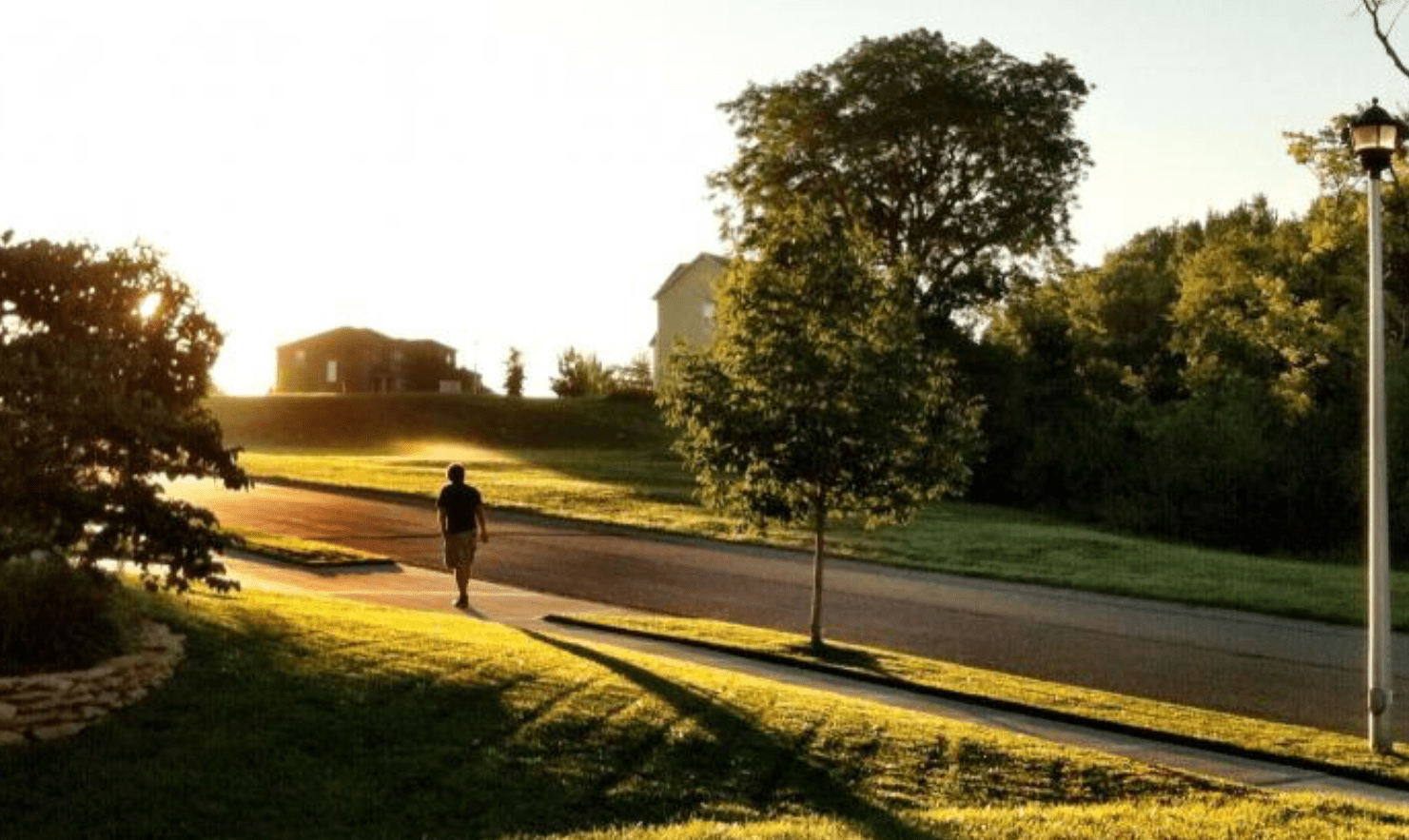In a time when we most need each other, we are the most alone.
In May of 2023, the U.S. Surgeon General released an advisory calling attention to our epidemic of loneliness and isolation. Even before the COVID-19 pandemic, over half of Americans reported measurable levels of loneliness. Often known as the silent killer, loneliness has been shown to lead to a myriad of individual and societal health problems, including depression, anxiety, and addictions to alcohol, drugs, and gambling.
Loneliness is a complex state caused by myriad of personal circumstances as well as societal trends. And while much attention has been given to the societal impacts of technology and social media on loneliness, the planning of American cities and towns – centered around the car and devoid of meaningful outlets for social interaction – has received less consideration that it deserves.
To understand our lonely built environment, we must understand suburban America.
Where traditional town planning largely created communities centered around town squares and grandiose public spaces, planning in the post-World War II era centered the iconic symbols of the so-called American dream – the nuclear family and the single-family home, made complete with a shiny automobile. In pursuit of this American Dream, we stopped prioritizing community wellbeing and instead focused on the individual – manipulating our environment so that families could live in large homes where they couldn’t hear, see, or even know their neighbors, and drive to work without interacting with their fellow commuters.
This era of planning has produced an urban landscape with more pavement than people. In most American cities and towns, you’re more likely to see strip malls, freeways, and parking lots rather than public plazas, parks, recreational trails, or even small-business lined main streets.
Because of this, the majority of Americans lack access to “third places”, meaning spaces outside of our work or home where we go to socialize, interact, or just simply relax. According to a Civic Science 2023 poll, only 14 percent of Americans reported socializing with friends or family on a daily basis; 29% on a weekly basis; and 22 percent on a monthly basis. A staggering 35 percent reported socializing less than once-a month or rarely/never.
Without the ability to interact with one another, we also lose the ability to care for one another. Seeing your neighbor on a run at the park or the neighborhood convenience store; bumping into friends at the local coffee shop; the casual conversations that happen while waiting for the bus, the library, or even the neighborhood bar. These moments of interaction, though seemingly small, are key to our wellbeing, or lack of it.
Unfortunately, with each passing year it these moments of In Real Life connectivity seem rarer and rarer.
Invisible to many is the care that is curated in communities where residents have easy access to know and organically engage with one another. When you bump into your neighbor, it’s often not just a simple hello, but also a check-in. How are you? How’s your family been? For many parents, having a social network is not a luxury but a necessity. Meetups in the parks and public social events means families and friends can share the responsibilities of watching their dependents.
When we know and regularly interact with the people who surround us, we are able to provide low-levels of care to one another. This can manifest in the form of a lending a listening ear, sharing food, goods and tips, watching someone’s children, or caring for a person’s belongings while they are out of town.
Individuals living in communities with high social connectivity have not only been found to have improved mental health outcomes, but there is also growing evidence that this increases physical health outcomes. Of the nine elements critical to the world’s blue zones – geographic zones that are home to the world’s oldest people – close knit social networks have been found to be a major contributor to the region’s age longevity.
Of course, there are limitations to reducing loneliness through better town planning alone. Beyond the obvious impediments of technology and our ever-demanding work schedules, there is also a limit to the level of care we can give to one another. We can listen to one another, but most of us are not therapists; we can watch each other kids, but most of us are not childcare workers; we can offer rides to the doctor, but most of are not medical professionals.
Yet the fact remains that our built environment is one of the pillars on which our ability to connect to one another stands. History has demonstrated this. The organization of communities throughout time were founded on the belief that we humans, like all living organisms, are stronger and more resilient – to natural disasters, economic recessions, and even pandemics – when we live in communities with strong interpersonal bonds.
We begin to care for one another when we know each other. As we consider the multitude of ways to address our nation’s loneliness crisis, we must have serious conversations about how we can better shape our built environment to enable extended networks of care. We should look for every opportunity to provide safe and accessible public spaces for us to socialize and recreate with our families, friends, neighbors; spaces for us to grow stronger in relationships and even organically meet and engage with strangers.






